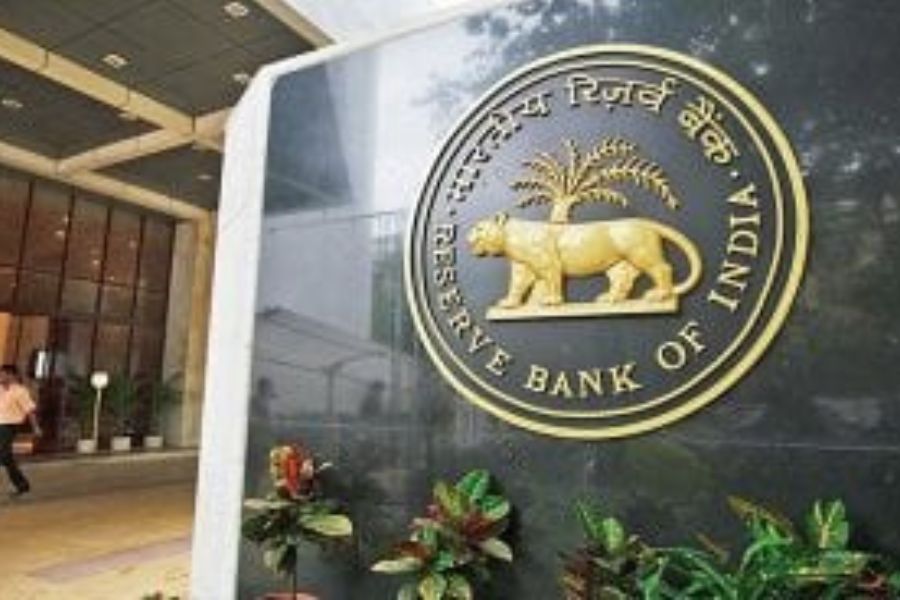Embedded Finance: The silent revolution in India’s digital payment ecosystem
Embedded Finance has created a revolution like no other in the world of digital banking and payments. It is essentially defined as the integration of financial services like lending, payment processing for non-financial businesses without the need to redirect to traditional financial institutions (banks).
India Business and Trade spoke with industry stakeholders to ascertain how embedded finance has created an eagerness amongst MSME on availing different financial services and its future prospects in India.

Photo Source: Pexels
New Delhi, August 4: Embedded Finance has created a revolution like no other in the world of digital banking and payments. It is essentially defined as the integration of financial services like lending, payment processing for non-financial businesses without the need to redirect to traditional financial institutions (banks). In the fintech industry, technology advancements have democratized access to even smaller micro-transactions for a buyer.
It makes financial services more accessible to the end-users, so that they can access them from merchant website or app without any need to switch to a different financial app/website. The amalgamation of various financial services, such as loans, debit cards, insurance, payment processing, and investment choices, into non-financial products allows businesses to integrate these services into their website or through APIs (Application Programming Interface). Peer-to-peer financing, product insurance, in-app purchases, etc are just a few examples of how they may appear. Therefore, there is no longer any need for users to look for multiple service providers because these services are integrated into the devices they use.
A report by Mckinsey estimates embedded finance market at US$ 20 billion in the United States alone in 2021. It is further projected to double in the next 3-5 years. Thanks to these services, small businesses that start up today need not even interact with a bank – their e-commerce or accounting platform can facilitate most of their financial needs.
In India, online financial services have become more affordable and easily accessible for unorganized players or MSMEs, which were earlier restricted largely to organized trade or larger players. In July 2023, it was reported that the Reserve Bank of India’s Digital Payments Index (RBI-DPI), which measures the growth of online payments in India, showed a 13.24% growth in FY 2022-23, indicating a strong trend in online transactions. In a report released on July 27, by the central bank states that in March 2023, the index recorded a score of 395.57, up from 377.46 in September 2022 and 349.30 in March 2022, representing a four-fold jump from 2018.
Is the sector expected to evolve similarly in India? What particular use cases are most lucrative for this market? To answer these questions, IBT held detailed interactions with industry stakeholders to ascertain the growth trends and prospects of this segment in the Indian market.
Strengthening Access to BNPL
Buy Now, Pay Later or BNPL has fast become a consumer favourite. The concept involves buying a commodity from a merchant and paying the due amount over the course of weeks or months. There are other benefits of embedded finance, such as instant loans, debit cards, insurance, payment processing and investment choices.
Industry experts say that the concept isn’t a new one in the Indian payment market and has been a salient feature of embedded finance for over a decade. Due to the availability of the “Buy Now, Pay Later” credit option, the Indian credit industry is growing and is a major driver of the lending markets at present.
Speaking with IBT, Vikul Goyal, Founder and CEO, Bimaplan, explained that the unlike taking loans from banks, short-term loans taken from fintech companies hold a different meaning for the credit-facility users. He says that that consumers opt for BNPL to cumulatively pay pending amount at the end of the month.
“It is not that a person cannot pay the bills instantly. But as our purchasing capacities go up, so does the frequency of the transactions. So, a user chooses to avail BNPL. It is a convenient option to pay the bills,” Goyal added.
Through BNPL, customers now have more freedom to purchase without being concerned about the high-interest fees that usually come with credit cards. They can postpone payments until the end of the billing cycle. The short-term funding option divides repayments into flexible, interest-free installments during the credit duration.
During the Covid 19 epidemic, when e-commerce volumes rose, online transaction options such as BNPL gained popularity throughout the world, and in India.
Ajay Chaurasia, VP Marketing, Product and Businesses, RupeeRedee, says, “Because of COVID, people started moving to digital transactions more in comparison to pre-COVID. And now BNPL has became a convenience part of it. Fintech companies still haven’t been able to capture the entire domestic market. If you look at the financial services and the offerings that everybody is providing right now, there is still a huge population which is still looking for credit, people are still trying want to invest, but they don’t know how to invest. So, I think at this point of stage we are still at the awareness of a campaign of embedded finance and its features.”
Setting a playfield for fintech and MSME
Hrushikesh Mehta, senior Vice President, Financial Services, ONDC explained the role of multi-faceted approach in facilitating a transparent and hassle-free credit facilities to the MSME.
“Fintechs have millions of users and regulated entities want access to those users. Can we (ONDC) become the bridge to the two of them?. There are a lot of ecosystem changes that are required sometimes to make bring companies and credit-users together. For example, you need credit guarantees for people who have not received loans before, because otherwise lenders are worse or the cost of the loan shoots up terribly, making it almost unaffordable. Here, ONDC will work with the ecosystem to help drive penetration for new-to-credit customers, for underserved customers who don’t easily get credit and also surface more choice.”
He further explained, “I think embedded finance is the way to go for MSMEs and fintech companies. It solves the cost of acquisition problem even if there is a commercial incentive, where say a lender will pay in ONDC parlance the buyer app for every converted loan, they only pay when they make money. They don’t have to spend lots of money on advertising and then get a customer. And that’s true for insurance and investments and things like that as well. Our goal is to make more products available and bring down the cost of acquisition for both parties.”
He also advocated the need for simpler regulations for payment companies and MSMEs to establish a conducive business environment, adding that ONDC is trying to build a playground with some rules, but they aim to make the onerous. One may not like to go through a 100-page book of regulations to adhere to. Regulations must be simple, you want to make it light and standardized, so that everyone knows the rules of the game, what needs to be displayed. And then they compete on the best product being offered to the customer and then displaying it the best way, making the best recommendation and so on. We believe so strongly in the standardized protocols,” Hrushikesh stated.
Challenges ahead?
There are various challenges which comes attached with different features of embedded finance. For example, in BNPL, companies do not pay adequate attention to the credit repayment capacity of an individual, which is usually evaluated through KYC or Know Your Customer process. This prompted India’s apex regulatory body, the Reserve Bank of India, to tighten the noose.
In 2022, the RBI announced a new set of rules on BNPL amid increased reports of financial irregularities. The regulations place limitations on how non-banking institutions can use credit lines and provide consumers with prepaid payment tools.
In terms of investment opportunities, lack of knowledge on existing financial services and investment options is creating a hindrance. Mayuri Srivastava, Wealth-Head, Arihant Capital, says that as of 2023, people are still investing in the fixed deposits only they are not aware about the mutual fund.
“As more users switch to fintech platforms, customers are automatically introduced to other forms of financial services, a new product. The same is with MSMEs. Small business want to stay relevant in the market, so they do study about it (embedded finance) and try to understand what exactly it is. So this helps to get new investors on the platform. When we talk about quick access to insurance, people are not aware about it. They only know one brand, which is from the government. When clients learn about benefits of embedded finance, they embrace and accept new financial services, which in return help in increasing income,” Mayuri said.
Pool of provisions
Hrushikesh Mehta told IBT that the ONDC is preparing simpler credit facilities for sole proprietors under B2B transactions, “We will start with individuals personal loans. It will begin with invoice based financing based on GST data for sole proprietors. After that, we will enable purchase financing. In a phase three or four, we will do it for partnerships and private limited companies because signing the loan agreements is the biggest challenge there.”
He feels that one way for MSMEs to thrive is to “just embrace technology rather than deny it”, as it will create a better connection with their customers and provide better customer experience across all levels. Financial services experts have also said that insurance facilities provided under embedded finance can provide a cushion against economic shocks for MSMEs, since larger companies have the capacity to bear economic shocks even without insurance.
CASHe COO and CTO, Yashoraj Tyagi expresses optimisim saying with more democratization of data availability and tools allowing MSMEs to have an online presence, it is likely for fintech companies to come up for offering multiple services to SMEs as well.
Mayuri Shrivastava predicts that features of embedded finance are likely to experience a big boom, “In next two to four years, this will help a lot and bring new investors as well as the clientele on the platform. It is going to bring the awareness in the rural areas as well.”
In the past, access to technology and online financial services remained a bottleneck due to high costs involved, compounded by lack of understanding. However, with the introduction of ONDC, and companies specializing in embedded finance tools, which provide plug and play solutions for MSMEs, it is likely that an ecosystem will be established for small players to avail those services and further pass on the benefits to their customers.













Leave a comment